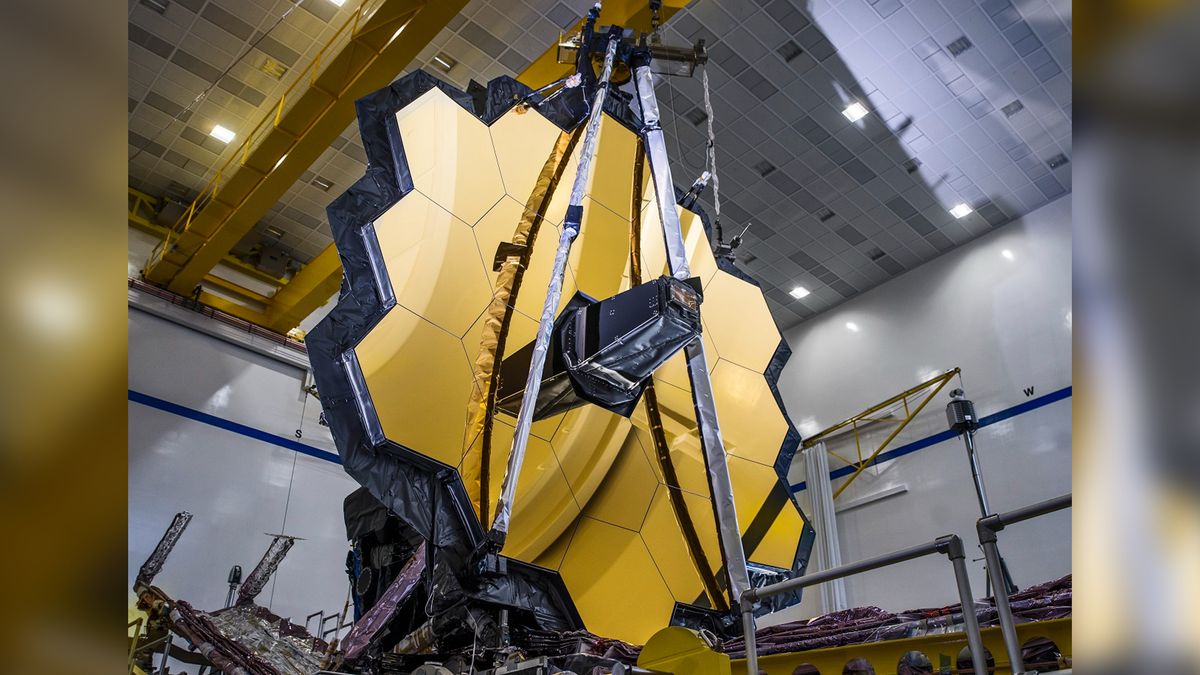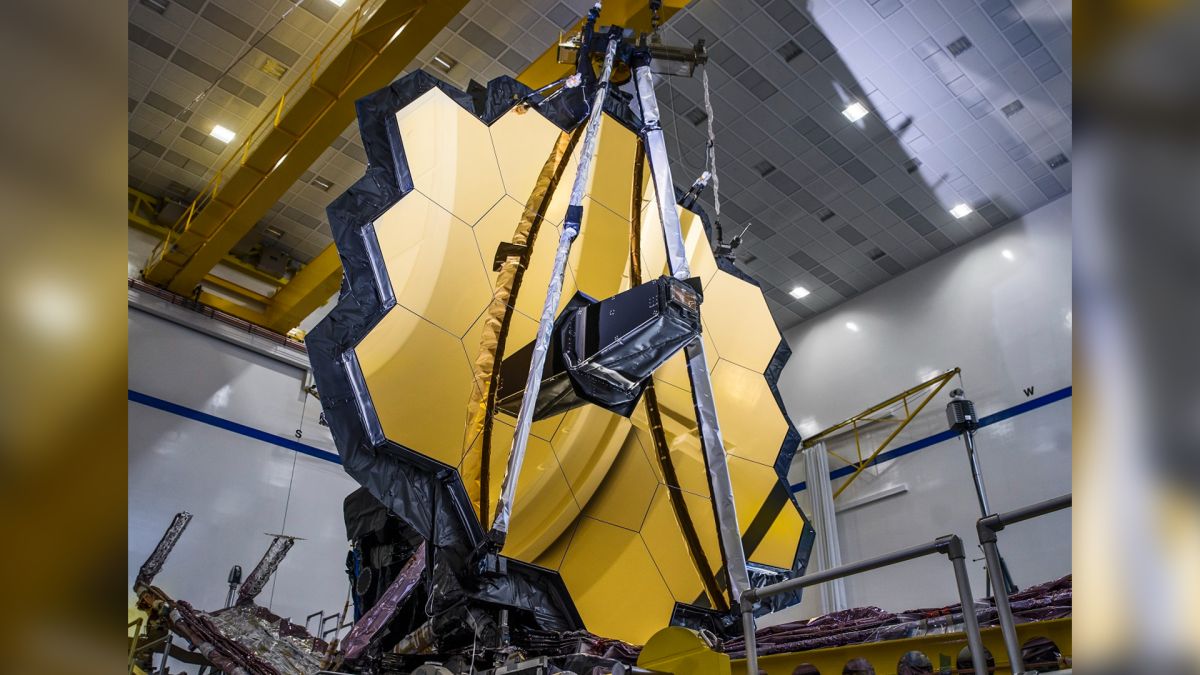
The James Webb Space Telescope is moving briskly on to its next big deployment.
On Tuesday (Jan. 4), Webb finished bringing its huge, five-layer sunshield up to the proper tension, wrapping up the most complex and tricky operation of the $10 billion observatory’s lengthy deployment phase.
The mission team can therefore now turn to the next big-ticket item on its to-do list: getting the telescope’s secondary and primary mirrors into the proper configuration. And the ball on that will get rolling very soon.
“We just finished deploying our sunshield today, but wait, there’s more! #NASAWebb’s secondary mirror is planned to be unfolded tomorrow, Jan. 5th, in the morning (Eastern time),” NASA officials said Tuesday evening via the mission’s Twitter account.
Related: Building the James Webb Space Telescope (gallery)
That target timeline apparently changed as Tuesday wore on. During a news conference early Tuesday afternoon, for example, mission team members said mirror deployment likely wouldn’t begin in earnest for a few more days.
“So I would say probably by this weekend we will start that process,” Alphonso Stewart, James Webb Space Telescope deployment systems lead at NASA’s Goddard Space Flight Center in Greenbelt, Maryland, said during the news conference. “But then it runs for about 10 days. That whole mirror deployment is a 10-day period.”
Webb’s 21.3-foot-wide (6.5 meters) primary mirror consists of 18 hexagonal segments arrayed across a central platform and two smaller side “wings.” These wings were folded back prior to launch so the assembly could fit inside the protective payload fairing of Webb’s Ariane 5 rocket. (The sunshield is about the size of a tennis court, so it too had to unfurl after liftoff.) Deployment of the primary mirror involves extending the two wings and locking them in place.
Webb’s secondary mirror is so named because it’s the second surface, after the primary, that light will hit on its way into the telescope’s four science instruments. The 2.4-foot-wide (0.74 m) secondary mirror sits at the end of several booms, which must be extended.
The secondary mirror will be deployed first. That operation is preceded by heating up the motors that deploy the mirror structure — an activity that Stewart had said would begin on Tuesday night.
“Following that, the next two days, we’ll start heating [motors] in preparation for the wing mirror deployments,” he said during Tuesday’s news conference.
Timeline shifts with Webb are not terribly surprising or concerning; team members have stressed repeatedly since the observatory’s Dec. 25 launch that most deployment operations are flexible.
Related stories:
Webb is designed to pick up faint heat signals from the early universe, challenging work that requires its optics and instruments to remain extremely cold. That’s why the observatory has such a big sunshield and why it will operate at the Earth-sun Lagrange Point 2 (L2), a gravitationally stable spot about 930,000 miles (1.5 million kilometers) from our planet. At L2, Webb will stay aligned with Earth, the sun and the moon, allowing the sunshield to block light and heat from these bodies continuously.
If all goes according to plan, the telescope will slip into orbit around L2 with an engine burn 29 days after launch (on Jan. 23). At that point, Webb will be at its final destination with all major deployments complete. But the observatory won’t be ready to begin its science work yet.
The mission team will still need to align the 18 primary mirror segments precisely so they act as a single light-collecting surface and check out and calibrate Webb’s instruments. These jobs will take several months to complete. Science operations are expected to begin this summer and last at least five years.
Editor’s note: This story was updated at 6:50 p.m. EDT on Tuesday (Jan. 4) with the new deployment timeline. The original version stated that secondary mirror deployment would likely begin this weekend, a target that mission team members laid out during Tuesday’s press conference.
Mike Wall is the author of “Out There” (Grand Central Publishing, 2018; illustrated by Karl Tate), a book about the search for alien life. Follow him on Twitter @michaeldwall. Follow us on Twitter @Spacedotcom or on Facebook.



